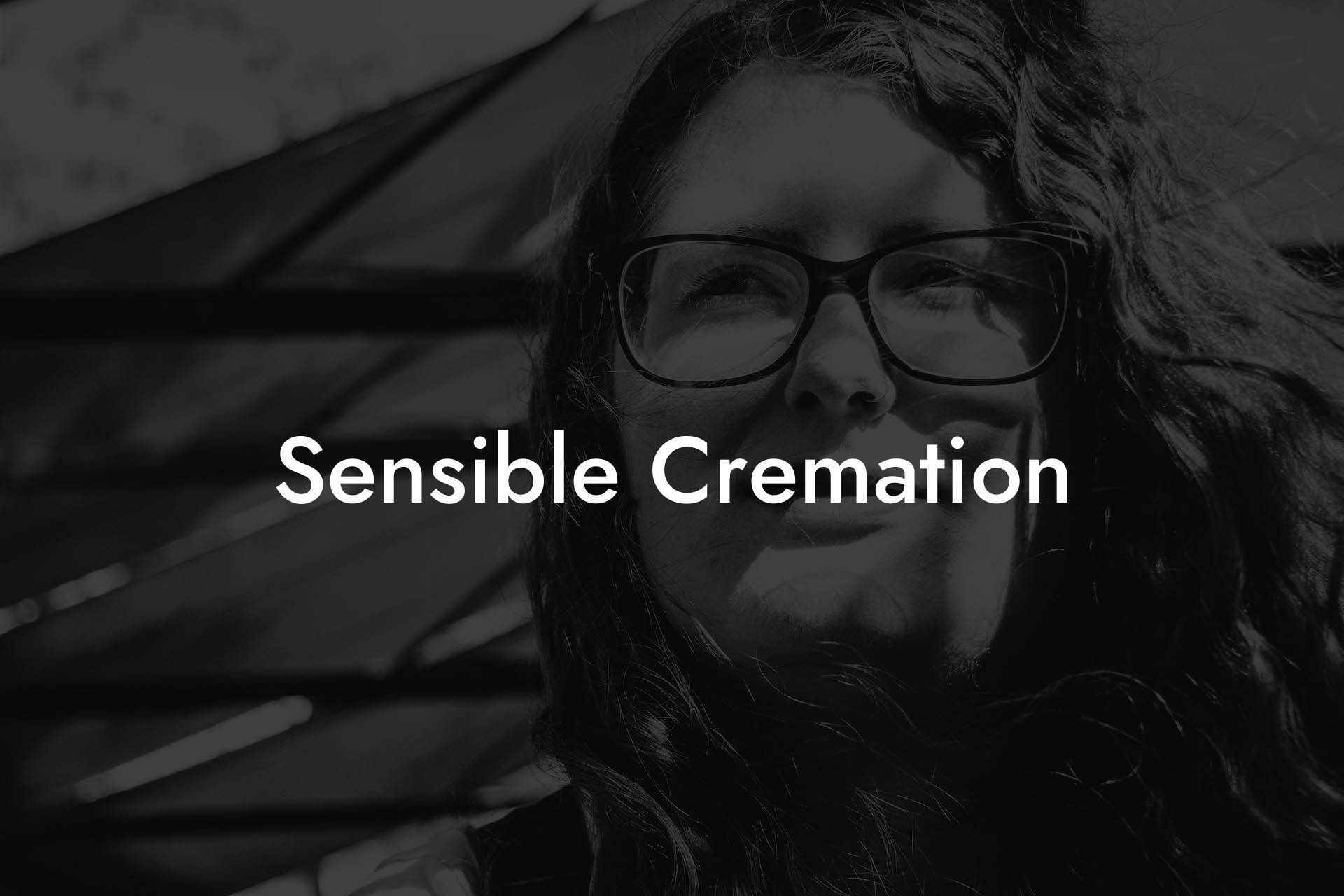Imagine if saying goodbye to a loved one could be a celebration of life, rather than a burden on the environment and your wallet. Welcome to the world of sensible cremation, a modern, eco-friendly, and cost-effective approach to funeral planning that honors your loved one while respecting the planet.
We know how hard that can feel. You are sorting through precious memories, searching for the right words, and trying to hold it together when it is time to speak. It is a lot to carry.
That is why we created a simple step by step eulogy writing guide. It gently walks you through what to include, how to shape your thoughts, and how to feel more prepared when the moment comes. → Find Out More
Quick Links to Useful Sections
What is Sensible Cremation?
Sensible cremation is a forward-thinking alternative to traditional funeral practices. It's a way to simplify the funeral process, reduce environmental impact, and save money without sacrificing dignity or respect for the deceased.
By choosing cremation, you're not only reducing your carbon footprint but also preserving natural resources, minimizing land use, and decreasing the amount of toxic chemicals released into the environment.
The Environmental Impact of Traditional Funerals
Traditional funerals can have a significant environmental impact, from the embalming process to the resources required for casket production and cemetery maintenance. Here are some startling facts:
- Each year, cemeteries in the United States bury over 30 million board feet of hardwood, enough to build 1,800 homes.
- The funeral industry uses over 827,000 gallons of embalming fluid annually, containing toxic chemicals like formaldehyde.
- Cemeteries occupy over 1 million acres of land in the United States, equivalent to the size of Los Angeles.
By choosing cremation, you're making a conscious decision to reduce your environmental footprint and promote a more sustainable future.
The Cost-Effective Benefits of Sensible Cremation
Sensible cremation is not only an eco-friendly option but also a cost-effective one. Here are some significant cost savings to consider:
- The average cost of a traditional funeral is around $7,000 to $10,000, while cremation can cost between $1,000 to $3,000.
- Cremation eliminates the need for a casket, embalming, and cemetery plot, resulting in significant savings.
- Many crematories offer package deals and discounts for online arrangements, making the process even more affordable.
By choosing sensible cremation, you can allocate resources to more meaningful aspects of the funeral, such as a memorial service or celebration of life.
What to Expect from the Sensible Cremation Process
The sensible cremation process is designed to be straightforward, efficient, and respectful. Here's what you can expect:
- Initial arrangements: You'll work with a funeral home or crematory to make arrangements, including choosing a cremation package and selecting a urn or container.
- Transportation: The deceased will be transported to the crematory, where they will be cared for with dignity and respect.
- Cremation: The cremation process typically takes 1-2 hours, during which time the body is reduced to ashes.
- Return of ashes: The ashes will be returned to you in an urn or container, which can be kept, scattered, or buried.
Throughout the process, you'll be treated with compassion and respect, ensuring a smooth and stress-free experience.
Resources and Community Support: Your Next Steps
Embarking on the sensible cremation journey can raise many questions and emotions. Here are some valuable resources to support you:
- National Funeral Directors Association (NFDA): A comprehensive resource for funeral planning and cremation information.
- International Cemetery, Cremation and Funeral Association (ICCFA): A trade association providing guidance on funeral and cremation options.
- Grief support groups: Local and online support groups can offer a safe space to process your emotions and connect with others who have experienced loss.
Remember, you're not alone in this journey. Reach out to these resources and your community for support and guidance.
Frequently Asked Questions about Sensible Cremation
Here are some frequently asked questions about sensible cremation:
1. Is cremation a dignified way to say goodbye?
Absolutely. Cremation is a respectful and dignified way to honor your loved one, and many families find it a meaningful way to say goodbye.
2. Can I still have a funeral or memorial service with cremation?
Yes, you can still hold a funeral or memorial service with cremation. Many families choose to have a celebration of life or memorial service before or after the cremation process.
3. What happens to the ashes after cremation?
The ashes will be returned to you in an urn or container, which can be kept, scattered, or buried. You can also choose to divide the ashes among family members or friends.
4. Is cremation environmentally friendly?
Yes, cremation is a more environmentally friendly option than traditional burial. It reduces the need for land use, preserves natural resources, and minimizes the amount of toxic chemicals released into the environment.

